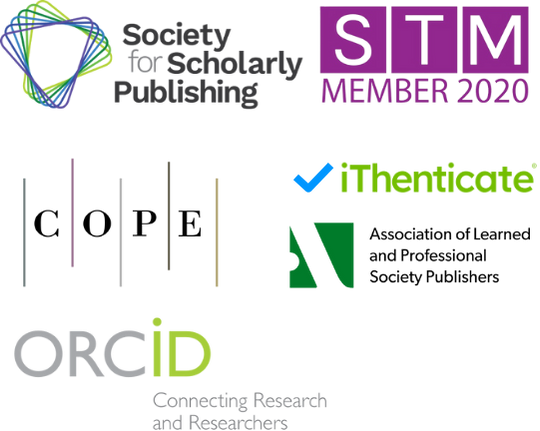High-Efficiency Urease Inhibitors from Copper Coordination Complexes: Biotechnology and Agricultural Applications
DOI:
https://doi.org/10.71222/sg4n6369Keywords:
urease inhibitors, copper coordination complexes, agricultural biotechnology, nitrogen management, coordination polymers, enzyme inhibitionAbstract
The development of efficient urease inhibitors has become increasingly critical for agricultural sustainability and environmental protection. This paper examines the potential of copper coordination complexes as high-efficiency urease inhibitors, with particular emphasis on their biotechnological and agricultural applications. Recent advances in coordination chemistry have demonstrated that copper-based compounds exhibit remarkable inhibitory effects against urease enzymes, offering superior performance compared to traditional inhibitors. The study synthesizes current research findings on copper coordination polymers and their inhibitory mechanisms, highlighting their effectiveness in nitrogen management systems. These complexes demonstrate exceptional stability and selectivity, making them promising candidates for sustainable fertilizer technologies. The research encompasses various copper coordination architectures, including dinuclear and two-dimensional coordination polymers, which have shown significant inhibitory activities. Furthermore, the integration of auxiliary ligands in copper complexes enhances their inhibitory potential while maintaining environmental compatibility. The applications extend beyond agriculture to include biosensor development and environmental monitoring systems. The review also addresses the molecular mechanisms underlying urease inhibition by copper complexes, providing insights into structure-activity relationships. These findings contribute to the development of next-generation fertilizer technologies that can reduce nitrogen losses and improve crop yield efficiency. The research demonstrates that copper coordination complexes represent a promising frontier in sustainable agricultural practices and biotechnological applications.
References
1. M. K. Fath, S. Khalili, Masoud, Z. S. Hashemi, and Mahboubeh Zarei, "Clodronic Acid has Strong Inhibitory Interactions with the Urease Enzyme of Helicobacter pylori: Computer-aided Design and in vitro Confirmation," Curr. Comput.-Aided Drug Des., vol. 20, no. 7, pp. 1100–1112, 2023, doi: 10.2174/0115734099271837231026064439.
2. R. Fopase, S. Nayak, M. Mohanta, P. Kale, and B. Paramasivan, "Inhibition assays of free and immobilized urease for detecting hexavalent chromium in water samples," 3 Biotech, vol. 9, no. 4, 2019, doi: 10.1007/s13205-019-1661-4.
3. J. G. Ayenimo and S. B. Adeloju, "Inhibitive potentiometric detection of trace metals with ultrathin polypyrrole glucose oxidase biosensor," Talanta, vol. 137, pp. 62–70, 2015, doi: 10.1016/j.talanta.2015.01.006.
4. Y. Song, X. Zhang, Z. Xiao, Y. Wang, P. Yi, M. Huang, and L. Zhang, “Coupled amorphous NiFeP/cystalline Ni3S2 nanosheets enables accelerated reaction kinetics for high current density seawater electrolysis,” Appl. Catal. B: Environ. Energy, vol. 352, p. 124028, 2024, doi: 10.1016/j.apcatb.2024.124028.
5. G. Xie, W. Guo, Z. Fang, Z. Duan, X. Lang, D. Liu, G. Mei, Y. Zhai, X. Sun, and X. Lu, "Dual-metal sites drive tandem electro-catalytic CO₂ to C₂⁺ products," Angew. Chem., vol. 136, no. 47, p. e202412568, 2024, doi: 10.1002/ange.202412568.
6. F. Ding, N. Su, C. Ma, B. Li, W.-L. Duan, and J. Luan, "Fabrication of two novel two-dimensional copper-based coordination polymers regulated by the 'V'-shaped second auxiliary ligands as high-efficiency urease inhibitors," Inorg. Chem. Commun., vol. 170, p. 113319, 2024, doi: 10.1016/j.inoche.2024.113319.
7. C. Lei, H. Dai, Y. Fu, Y. Ying, and Y. Li, "Colorimetric Sensor Array for Thiols Discrimination Based on Urease–Metal Ion Pairs," Anal. Chem., vol. 88, no. 17, pp. 8542–8547, 2016, doi: 10.1021/acs.analchem.6b01493.
8. Y. Gao, B. Vinnerås, and P. Simha, "Partitioning behavior and crystallization of urea, salts and water during stepwise dehy-dration of acidified human urine by evaporation," Sci. Total Environ., vol. 966, p. 178709, 2025, doi: 10.1016/j.scitotenv.2025.178709.
9. F. Ding, C. Hung, J. K. Whalen, L. Wang, Z. Wei, and L. Zhang et al., "Potential of chemical stabilizers to prolong urease inhi-bition in the soil–plant system," J. Plant Nutr. Soil Sci., vol. 185, no. 3, pp. 384–390, 2022, doi: 10.1002/jpln.202100314.
10. A. M. F. Soto, C. M. R Almeida, F. G. Fermoso, and E. D. van Hullebusch, "Copper and zinc removal from anaerobic digestates via Sporosarcina pasteurii induced precipitation: Effect of volatile fatty acids on process performance," J. Environ. Manage., vol. 373, p. 123959, 2025, doi: 10.1016/j.jenvman.2024.123959.
11. M. G. Wolfe, M. M. Ali, and J. D. Brennan, "Enzymatic Litmus Test for Selective Colorimetric Detection of C–C Single Nucleotide Polymorphisms," Anal. Chem., vol. 91, no. 7, pp. 4735–4740, 2019, doi: 10.1021/acs.analchem.9b00235.
12. F. Ding, C. Ma, W.-L. Duan, and J. Luan, "Second auxiliary ligand induced two coppor-based coordination polymers and urease inhibition activity," J. Solid State Chem., vol. 331, pp. 124537–124537, 2023, doi: 10.1016/j.jssc.2023.124537.
13. Y. Liu, Q. Dai, X. Jin, X. Dong, J. Peng, and M. Wu et al., "Negative Impacts of Biochars on Urease Activity: High pH, Heavy Metals, Polycyclic Aromatic Hydrocarbons, or Free Radicals?," Environ. Sci. Technol., vol. 52, no. 21, pp. 12740–12747, 2018, doi: 10.1021/acs.est.8b00672.
14. P. T. Bremer, S. Pellett, J. P. Carolan, W. H. Tepp, L. M. Eubanks, and K. N. Allen et al., "Metal Ions Effectively Ablate the Action of Botulinum Neurotoxin A," J. Am. Chem. Soc., vol. 139, no. 21, pp. 7264–7272, 2017, doi: 10.1021/jacs.7b01084.
15. M.-J. Cui, A. Teng, J. Chu, and B. Cao, "A quantitative, high-throughput urease activity assay for comparison and rapid screening of ureolytic bacteria," Environ. Res., vol. 208, p. 112738, 2022, doi: 10.1016/j.envres.2022.112738.
16. A. Akter, M. R. Islam, M. R. Islam, Md. A. Islam, S. L. Hasan, and S. Uddin et al., "Methods of Urea Fertilizer Application In-fluence Growth, Yield, and Nitrogen Use Efficiency of Transplanted Aman Rice," Water, vol. 14, no. 21, p. 3539, 2022, doi: 10.3390/w14213539.
17. S. N. Botewad, D. K. Gaikwad, N. B. Girhe, H. N. Thorat, and P. P. Pawar, "Urea biosensors: A comprehensive review," Bio-technol. Appl. Biochem., vol. 70, no. 2, 2021, doi: 10.1002/bab.2168.
Downloads
Published
Issue
Section
License
Copyright (c) 2025 Xin Wang (Author)

This work is licensed under a Creative Commons Attribution 4.0 International License.


